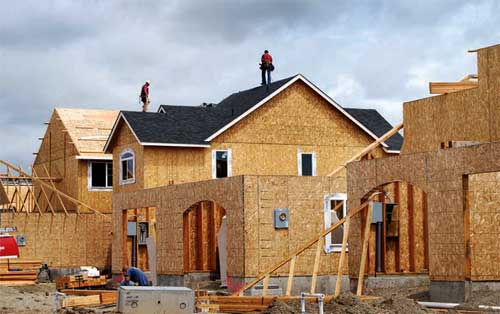By Brice Wallace
Utah’s housing shortage is great for homeowners but tough for young people and eventually could hamper the state’s economic development.
Those conclusions by James Wood at a recent presentation in Salt Lake City included his belief that it is “almost inescapable” that local housing price increases will outpace the national average.
“This is a great advantage for all of us who own our own homes,” Wood, Ivory-Boyer senior fellow at the Kem C. Gardner Policy Institute at the University of Utah, said at the Building Owners and Managers Association (BOMA) of Utah Education Summit. “Housing price increases, it’s a great wealth creator. … It’s great for the homeowner. It is tough on the next generation.”
{mprestriction ids="1,3"}Younger people, especially millennials, cannot afford to live where they want, with many local millennials unable to fulfill their desire to live in Salt Lake City. Wood cautioned that Utah could eventually experience a trend seen in California: high housing costs keeping people from moving into the state. With a nation-leading average annual population growth of 2 percent between 2000 and 2016, Utah is among several states that have seen housing prices grow along with population and employment, he said.
“California has had a lot of job growth, but nobody can move to California because the housing prices are too high,” Wood said. “And that’s the worry about the long term for Utah of that happening: You get a reduction in real demographic growth because of high housing costs.”
Utah’s current housing situation is already tight. For the first time in 40 years, the number of new households is growing faster than the number of new housing units, resulting in rising housing prices and lower homeownership, he said. Typically, the market would have 10 percent more housing units than households.
“Right now, it’s very much the reverse,” Wood said. “We’re getting instead fewer housing units than we’re getting households, and it’s putting a real strain on the market. … It is a housing shortage.”
The shortage is seen in new homes, existing homes and apartment rentals. “Those are the entry points into the housing market. Every one of those entry points shows signs of severe stress,” he said.
For example, for the sixth consecutive year, the rental vacancy rate in Salt Lake County is less than 4 percent. It’s been below 3 percent for the past three years. “The rental market,” Wood said, “is really tight.”
As for existing homes, many owners are keeping theirs — they like the current low interest rates — rather than moving up to something larger. “They know they can sell their home. They’re just not sure they can find a home to replace the one they’re selling. That has been a sticking point for the market,” Wood said.
New-home construction has been limited by a lack of labor, which has slowed projects and increased their costs. Home builders also have been unable to find developable land or found it to be too costly, and they have seen development costs rise due to a myriad of municipal fees and ordinances.
Demand for homes has grown as Utah’s net in-migration has rebounded. Wood said the flow of people into the state should reach about 30,000 in the next couple of years. “That’s juicy demand in the housing market, and I think we’re going to see continued stress in the market because of that projection,” he said.
Changes in the demographics of that in-migration also will affect the Utah construction industry, he predicted. Much of Utah’s in-migration the past few decades has been from Latin American countries, but now that group represents less than 40 percent of in-migration and has been bypassed by Asians. That shift to Asian immigration has hurt the construction labor supply, he said, noting that 22 percent of Utah’s foreign-born population from Mexico and Central America work in construction, while less than 2 percent of foreign-born immigrants from Asia work in that industry.
Wood predicted little change in the Utah housing markets in the short term. “What’s the relief? There’s not too much relief, given what we see in the next couple of years,” he said.
That period likely will continue to see housing price increases and slipping homeownership rates, he said. Compounding the problem are large construction projects that will boost the demand for labor in a state with an already tight labor situation. Those projects include buildings for Amazon and UPS, the continued redevelopment of the Salt Lake City International Airport, the new state prison and highway work.
“So you have these huge projects in the context of a rapidly growing market where we have labor shortages, so I don’t see any relief on the labor shortage side,” he said. “You hate to say it, but the only way we really get relief is if you have a recession, and we don’t want to go there.”
From an overall economy standpoint, Wood expects next year to be a virtual repeat of the past couple of years. “Right now, we are on course in 2018 to be just about what we did in ’16-’17,” he said. “It’s going to be a good year unless something happens internationally, but there’s nothing local that will upset where we are.”{/mprestriction}








